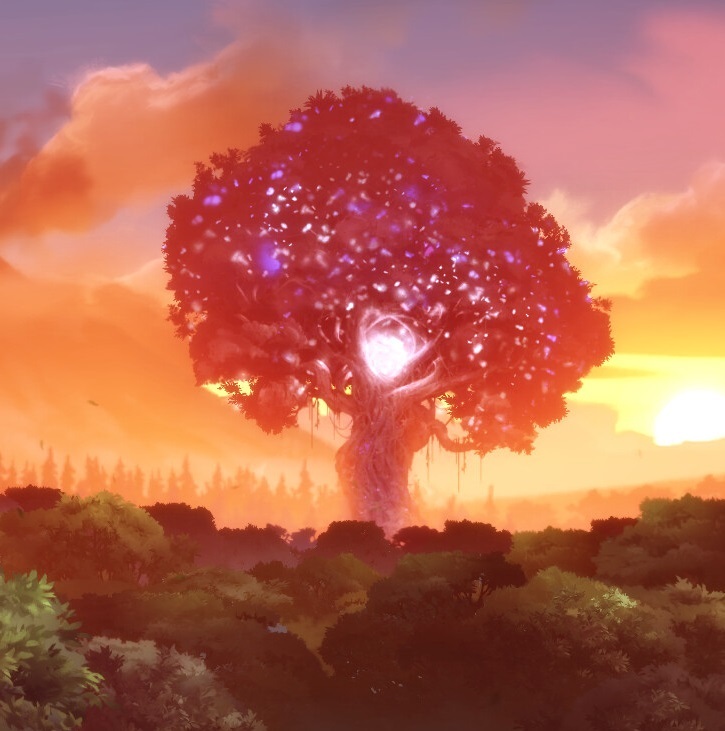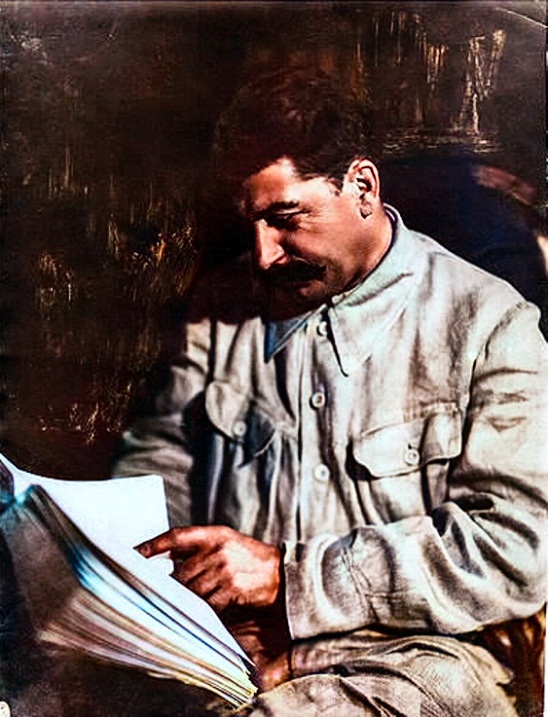Image is of a Hezbollah missile attack on a military camp west of Jenin.
The situation between Hezbollah and Israel is rapidly escalating, with massive bombing campaigns on southern Lebanon by Israel predominantly on civilians (as the tunnels in South Lebanon are mostly unreachable to the Zionists, just like in Gaza), while Hezbollah and its allies respond with missile attacks predominantly on Israeli military facilities. Israel is spreading an evacuation order to the residents of southern Lebanese villages while also bombing their routes of escape and civilian infrastructure, similar to a terror tactic used widely in Gaza.
Northern Israel is currently under military censorship to hide their losses, so we get very little information other than what the Resistance provides and what videos and images get through the censors.
I don't know if Israel will dare a ground incursion soon, but it seems fairly likely in the coming days or weeks.
Please check out the HexAtlas!
The bulletins site is here!
The RSS feed is here.
Last week's thread is here.
Israel-Palestine Conflict
Sources on the fighting in Palestine against Israel. In general, CW for footage of battles, explosions, dead people, and so on:
UNRWA reports on Israel's destruction and siege of Gaza and the West Bank.
English-language Palestinian Marxist-Leninist twitter account. Alt here.
English-language twitter account that collates news.
Arab-language twitter account with videos and images of fighting.
English-language (with some Arab retweets) Twitter account based in Lebanon. - Telegram is @IbnRiad.
English-language Palestinian Twitter account which reports on news from the Resistance Axis. - Telegram is @EyesOnSouth.
English-language Twitter account in the same group as the previous two. - Telegram here.
English-language PalestineResist telegram channel.
More telegram channels here for those interested.
Russia-Ukraine Conflict
Examples of Ukrainian Nazis and fascists
Examples of racism/euro-centrism during the Russia-Ukraine conflict
Sources:
Defense Politics Asia's youtube channel and their map. Their youtube channel has substantially diminished in quality but the map is still useful.
Moon of Alabama, which tends to have interesting analysis. Avoid the comment section.
Understanding War and the Saker: reactionary sources that have occasional insights on the war.
Alexander Mercouris, who does daily videos on the conflict. While he is a reactionary and surrounds himself with likeminded people, his daily update videos are relatively brainworm-free and good if you don't want to follow Russian telegram channels to get news. He also co-hosts The Duran, which is more explicitly conservative, racist, sexist, transphobic, anti-communist, etc when guests are invited on, but is just about tolerable when it's just the two of them if you want a little more analysis.
Simplicius, who publishes on Substack. Like others, his political analysis should be soundly ignored, but his knowledge of weaponry and military strategy is generally quite good.
On the ground: Patrick Lancaster, an independent and very good journalist reporting in the warzone on the separatists' side.
Unedited videos of Russian/Ukrainian press conferences and speeches.
Pro-Russian Telegram Channels:
Again, CW for anti-LGBT and racist, sexist, etc speech, as well as combat footage.
https://t.me/aleksandr_skif ~ DPR's former Defense Minister and Colonel in the DPR's forces. Russian language.
https://t.me/Slavyangrad ~ A few different pro-Russian people gather frequent content for this channel (~100 posts per day), some socialist, but all socially reactionary. If you can only tolerate using one Russian telegram channel, I would recommend this one.
https://t.me/s/levigodman ~ Does daily update posts.
https://t.me/patricklancasternewstoday ~ Patrick Lancaster's telegram channel.
https://t.me/gonzowarr ~ A big Russian commentator.
https://t.me/rybar ~ One of, if not the, biggest Russian telegram channels focussing on the war out there. Actually quite balanced, maybe even pessimistic about Russia. Produces interesting and useful maps.
https://t.me/epoddubny ~ Russian language.
https://t.me/boris_rozhin ~ Russian language.
https://t.me/mod_russia_en ~ Russian Ministry of Defense. Does daily, if rather bland updates on the number of Ukrainians killed, etc. The figures appear to be approximately accurate; if you want, reduce all numbers by 25% as a 'propaganda tax', if you don't believe them. Does not cover everything, for obvious reasons, and virtually never details Russian losses.
https://t.me/UkraineHumanRightsAbuses ~ Pro-Russian, documents abuses that Ukraine commits.
Pro-Ukraine Telegram Channels:
Almost every Western media outlet.
https://discord.gg/projectowl ~ Pro-Ukrainian OSINT Discord.
https://t.me/ice_inii ~ Alleged Ukrainian account with a rather cynical take on the entire thing.


Part one effortpost here, I chose number two. Sorry for any grammatical fuckups in advance, it was too long to proof read.
The Rise of the Collective Shia Identity: Part One
The year is 1978. Ayatollah Khomeini, the main voice of Shia Islamism has just been expelled from Najaf by Saddam Hussein. Najaf, the capital of Shia Islam and where the biggest Hawzas (Shia Islamic schools) are located, is a hotspot of political repression, executions, and arrests. The main Marja (basically Shia pope), Sayyid Abu Al Qasim Al Khoei is reduced to a strictly religious role, giving rulings about useless things like marriages and inheritance. His predecessor, Sayyid Muhsin Al Hakim, pushed the political buttons too hard with a ruling that deemed communists and Baathists as disbelievers, which made the Iraqi state go crazy and start a huge campaign of repression of anything political from the Shia elite. Khomeini’s development of the concept of Wilayat Al Faqih was very worrying for Baathist Iraq, so he was expelled from Najaf.
Shias in Iraq never got a place post-Sykes-Picot, with the Kingdom of Iraq being dominated by the Sunni Baghdadi elite. The period between 1958-1968 after the revolution was too chaotic and disjointed to produce an elite, with daily conflicts and coup attempts by adventurers with different ideologies. The Baathist period produced a new elite strictly dominated by Sunnis from Salahaddin Province, so the Shias just never got a seat at the table. Two ideologies penetrated the Shia mind, Islamism and Communism. Islamists were concentrated in Karbala and Najaf, two holy cities for Shia Islam. Communists where concentrated in Nasiriyah, Amarah and Basra, cities where poverty was rampant. Islamists were finally organised in the form of the Dawa Party, led by Musa Al Sadr’s cousin Muhammed Baqir Al Sadr. Musa Al Sadr would later rise as the spiritual leader of the Lebanese Shia community. Muhammed Baqir Al Sadr’s works and political activities really annoyed the Iraqi state, so he and his sister were executed by the state in 1980. Most of their followers were executed or exiled. Many of the influential families in Najaf and Karbala had some Persian ancestry, nearly all those families suffered from mass deportations as Saddam’s anti-Persian paranoia grew. The communists suffered from the same fate, with most communists either executed or exiled by the state due to their political activities.
Now we’re done with Iraq, let’s go to Iran. Shia Islamism is dead here too, the Shah’s security services arrests anyone with any political activity. Khomeini was successfully chased out 20 years ago, and there’s no organised political force that can even talk loudly without getting executed. The Shah is at least Shia Muslim on paper, he prays in public once every 10 years, visits the shrines in Qom and Mashhad occasionally, but to everyone with a functioning brain, this man is a disbeliever. There’s something brewing, but let’s wait with that story.
Let’s go to Lebanon. Shias in Lebanon are around half of the Muslim population. It’s hard to get exact numbers, but Shias are around 25% of the total population of the country. The Shia community here also never got a real seat at the table. The president holds most of the power and is always a Maronite. The prime minister gets fired every few weeks, but he’s always a Sunni and does nothing while the Maronite elite is pretending to be French and robbing the country. The speaker of the parliament is Shia, but toilet paper is more useful than that position. Feudalism didn’t really end in the Shia parts of Lebanon, most Shias were farmers who were getting fucked so hard on a daily basis that they didn’t have time to even think about politics. Remember we’re in 1978, where are the Shias in the middle of civil war? The answer is nowhere. The main sides are Maronites vs Sunni Muslims, communists and Palestinians. Shias were not a major factor here. The only notable Shia organization is the Amal Movement, led by Musa Al Sadr. Musa was a charismatic leader who would set the foundations of the modern Shia Lebanese identity, he was respected by all sectors of the cursed Lebanese society and his connections to Iran and Iraq were slowly starting to be important in a regional context. But nothing good lasts, as he was inexplicably disappeared and presumably killed by Gaddafi during a routine visit to Libya in August 1978.
Let’s go to Yemen and the Gulf. In Bahrain, Saudi Arabia and Kuwait, Shias were an afterthought, they are 0% of the ruling families and have zero political representation. They’re allowed to do some rituals at home when no one sees, but if you open your mouth in public and say anything Shia Islamist, you’re getting disappeared and your whole family will probably be deported to Iran or something. Shias in Bahrain are the absolute majority and they’re significant minorities in Kuwait and Saudi Arabia. In Yemen, the Shias are not the same kind of Shia as in Iraq, Iran and Lebanon. The main group of Shia Muslims are either called Jaafari after the theological works of the sixth Shia Imam Jaafar Al Sadiq, or Ithna Ashari (Twelvers) due to their belief in twelve Imams after the Prophet Muhammed, starting with Imam Ali ibn Abi Talib and ending with Imam Muhammed Al Mahdi, also known as the Hidden Imam who according to Shia beliefs will reappear one day and basically set in motion the end of the physical world. The Shia of Yemen are known as Zaydis, after Zayd ibn Jaafar Al Sadiq, who the Zaidis recognized as 7th Imam, while the Twelvers recognized Musa ibn Jaafar Al Sadiq. The Zaidi Imamate in Northern Yemen continued for nearly a thousand years, but it could not withstand the post-WW2 chaos in the region and ended in nearly comic fashion after a coup led by local rivals and involvement from an exiled Iraqi officer. The Zaydi community here in 1978 is in disarray, with many converting to Sunni Islam out of convenience in a new world. There’s no organized Zaydi force or political party, they just farm in the highlands of Northern Yemen and chill out there. It is a fading group, but wait, something just happened in Yemen. Ali Abdullah Saleh, a Zaydi military officer from Sanaa, and one of the great adventurers of the 1900s in the Middle East, just did a military coup and took power in the failing state of North Yemen in July 1978.
How did this defeated religious group go from edges of the region to the dominant group in five countries and a political force that annoys America and Israel? We’ll find out in the next episode as we cover the Islamic Revolution in Iran and the formative value of the Iraq-Iran War, the failed Shaaban Revolution in Iraq, the rise of Hezbollah in the south of Lebanon, and the rise of the Houthi (Ansarallah) movement in Yemen.
Thank you so much for this, I hope your family in Lebanon is staying safe
Great read, thanks for the effort post.
Amanzingly written, thank you.
Incredible work as always